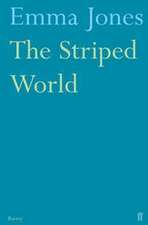Cherry Blossom Epiphany -- The Poetry and Philosophy of a Flowering Tree
Autor Robin D. Gillen Limba Engleză Paperback – 30 sep 2006
Preț: 299.63 lei
Nou
Puncte Express: 449
Preț estimativ în valută:
57.33€ • 60.02$ • 47.44£
57.33€ • 60.02$ • 47.44£
Carte tipărită la comandă
Livrare economică 05-19 aprilie
Preluare comenzi: 021 569.72.76
Specificații
ISBN-13: 9780974261867
ISBN-10: 0974261866
Pagini: 740
Dimensiuni: 189 x 246 x 38 mm
Greutate: 1.3 kg
Editura: Paraverse Press
Locul publicării:United States
ISBN-10: 0974261866
Pagini: 740
Dimensiuni: 189 x 246 x 38 mm
Greutate: 1.3 kg
Editura: Paraverse Press
Locul publicării:United States











